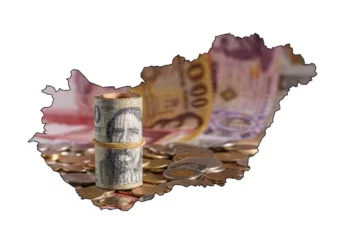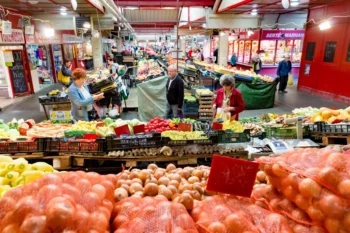Shocking rise in food prices in Hungary
Hungarian shops have been hit in several waves. Food prices over the past 12 months show an increasingly worrying trend. The first major price jump occurred at the end of 2021. The next jump followed in February-March. In April, many analysts thought that inflation would slow down, but this did not happen.
Severe inflation
The g7 analysis shows a concerning picture of food price rises in Hungary. The inflation rate has been increasing by 5 percent every month.
The price increase started at the end of 2021. At the beginning of 2022, the 10 percent doubled to 20 percent. It jumped to 25 percent in April and then 30 percent in June. July represents the peak, so far. In that month, we paid 35 percent more for food items than a year earlier.

Read alsoHungarian forint getting stronger – how can that continue?
Method of measuring prices
The prices have been measured at the end of each month by g7 in the following four chain stores: Aldi, Lidl, Penny Market and Tesco. The analysts always selected the cheapest version of each product, which means they were comparing basic products instead of premium quality products. There were quite many some products that experienced a considerable price jump. The price of bread, buns, rolls and spaghetti noodles doubled in a year. A total of 42 products were tested. Only four products were cheaper than a year earlier: carrots, turnips, apples and onions. In the case of other products, the prices increased so rapidly that even the shops could not keep up. As a result, there were huge price differences between certain products.
Where will it end?
It was recently reported that customers can easily find a loaf of bread as expensive as HUF 1,000 (EUR 2.54) on the shelves. The cheapest half-brown bread currently costs HUF 522 (EUR 1.33) a kilo, on average, while it was HUF 251 (EUR 0.64) a year ago. Apparently, further price increases can be expected.
The prices of dairy products (butter, sour cream, cheese, yoghurt) show an annual increase of 50-60 percent. For meat, a market increase of 30 percent is to be expected. As prices go up, it becomes increasingly difficult to maintain supplies of price-fixed products. This means a serious loss of revenue for shops, which have already begun to order less stock, 444.hu reports.

Read alsoShops are tricking the public to hide inflation in Hungary
Source: 444.hu, g7.hu
please make a donation here
Hot news
What happened today in Hungary? — 24 April, 2024
Hungarian minister Nagy: Brussels keeps the agriculture crisis going
Primark to open its first store in Hungary soon!
Orbán promises everyone profession and decent pay
Wolt in Hungary exposed: Is the food delivery sector really filled with guest workers?
Ruling Fidesz is afraid of a migration wave towards Europe


4 Comments
The “ZENITH” – just centering on INFLATION, as part of the Hungarian economy, it’s end – DISTANCED.
Lack of sustainability, in the core componentry, of the “broadsheet” Hungarian economic & financial landscape – what is FACTUALLY – going to see – bring an end – to the aggressiveness trend of Inflation in Hungary, a trend that is best described, being RAMPANT.
Florint de-valuation – under excessive pressure.
Interest Rates – on the Increase.
The list of componentry that is the CORE of the embattled Hungarian Economy – remains under Humongous pressure.
Darkened days – challenging days – immediate position, to short & long term in Hungary.
WHAT on-coming RAMIFICATIONS does this “Bleek” economic & financial factual picture – pose for Hungary ?
The food chain supply – imports into Hungary – interesting to watch this pattern, which will TIGHTEN – sadly.
I have just done an online shop (food only) at Tesco.hu and the bill was 17.499 huf inc delivery (699 huf). (38.04 GBP using 460 as the exchange rate). Following a conversation with my sister in the UK yesterday about prices, I did a virtual shop today at Tesco UK. A like for like shop (as much as is possible) came to 41.86 GBP plus delivery, 19,255 huf. Then factor in that almost all foodstuffs in UK supermarkets are zero rated for VAT whereas my shopping here had some things rated at 5%, some at 18% and some at 27%. The only conclusion that one can reach is that food is still much cheaper in Hungary than in the UK.
Unfortunately, high food prices are world wide. In the US, some families have to make a decision whether to buy gas of meat.
@mariavontheresa, most people in the US and indeed in Hungary eat too much meat so they should see this as an opportunity to improve their diet. Personally I only eat meat about twice a week. Hunter gatherers, our ancestors, did not eat meat every day, it is quite unnecessary to consume it on the scale that many people do today and in the quantities that they do.